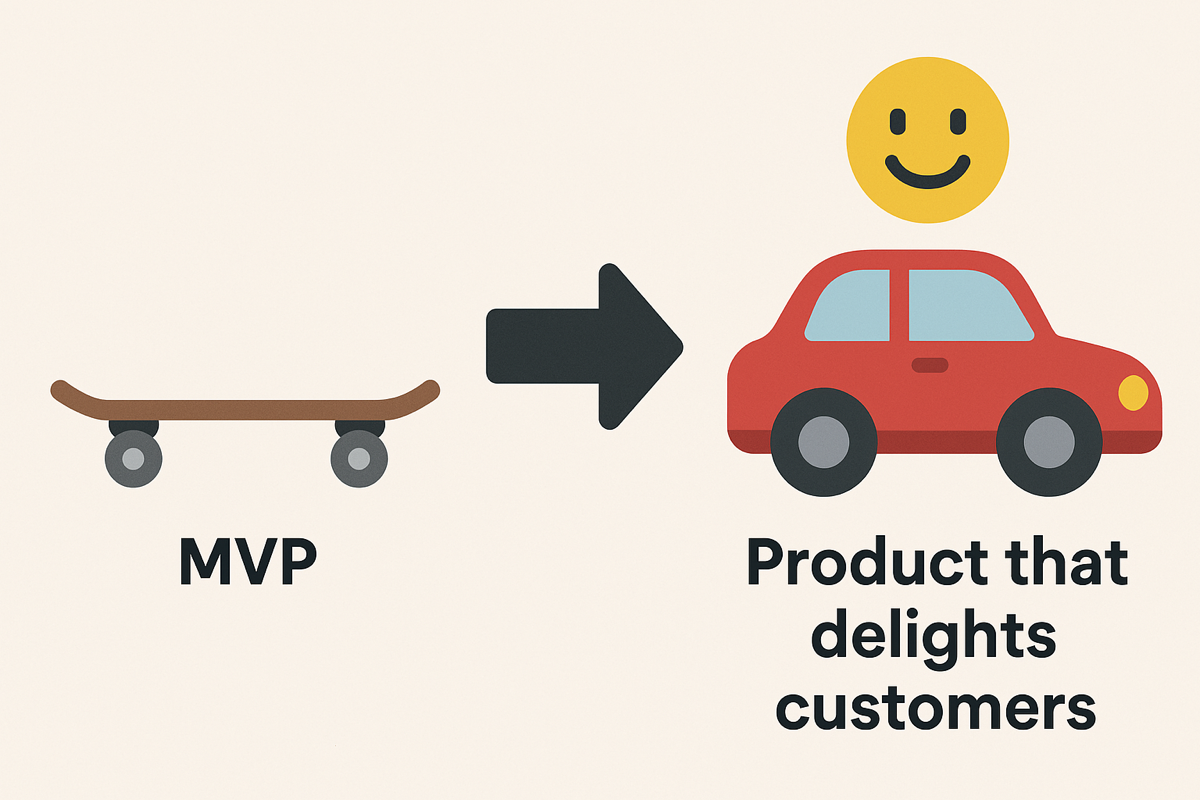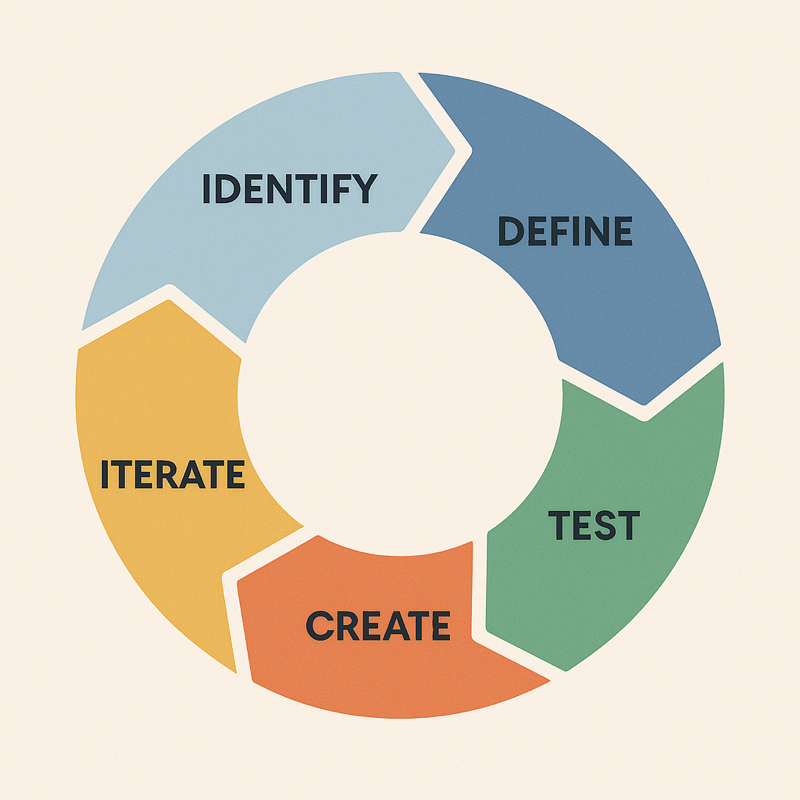
Minimum Viable Product (MVP) - UX Words to Know
What is a minimum viable product?
Otherwise known as an MVP in the UX and product world, a minimum viable product is exactly what it sounds like: It’s the most basic thing that you can put in front of your target users that still conveys your idea.
It’s the most basic thing that you can put in front of your target users that still conveys your idea.
An MVP could be a simple landing page that defines what problem you’re trying to solve, a prototype with minimal features, or even a PowerPoint presentation. The main purpose of MVPs is to validate whether what you’re building is actually useful to your users with minimal effort. Without it, you might end up spending a lot of resources creating a product, only to realize that no one actually needs or wants that solution.
Now if you’re wondering - “Wouldn’t a basic, simple version of my idea look pretty crappy and lose my customers’ trust?”, you’re not alone! This criticism has given rise to terms like Minimum Delightful Product (MDP), which is an evolution of our basic MVP. MDP goes a step further and says it isn’t enough to just convey the idea. Your basic version should also delight and engage the potential customers. This version allows you to validate your idea without losing credibility in your initial version.

At the end of the day, the key concept behind MVP or MDP is to validate your idea with a simple, low-effort concept before you commit resources to build out your product. You’ll not only save time and effort but also ensure you’re creating real value for your users!
Why is an MVP important?
Building a product from scratch is a huge investment in terms of time, money, and effort. Without validating the idea first, there’s a risk of creating something that doesn’t truly resonate with users. That’s where a minimum viable product (MVP) becomes essential.
Here’s why an MVP is important:
1. Faster time to market
An MVP helps you launch your product quickly by focusing only on the core features. Instead of spending months (or years) perfecting every aspect, you get a functional version out in the market fast and begin gathering insights.
2. Reduced development costs
Since an MVP includes only the essential features, it requires fewer resources. You can test the waters without heavily investing in development, saving money if major changes are needed later.
3. Early user feedback
One of the biggest advantages of an MVP is collecting real user feedback early on. Understanding how users interact with your product allows you to refine it based on their needs and expectations.
4. Avoiding unnecessary features
It’s tempting to build a feature-rich product from the start, but many features might not be necessary. By launching an MVP, you can identify which features users find valuable and avoid wasting resources on unnecessary additions.
5. Attracting investors
A well-executed MVP demonstrates a proof of concept, making it easier to attract investors. When you can show real user engagement and demand, investors are more likely to support further development.
How to build an MVP (step-by-step guide)
Creating an MVP means prioritizing what truly matters rather than trying to cut corners. Here’s a structured approach to building a successful MVP:

Step 1: Identify the core problem you’re solving
Every great product starts with a problem that needs to be solved. Ask yourself:
-
What pain point does my product address?
-
Who are my target users?
-
How does my solution improve their lives?
Step 2: Define the essential features
Once you’ve identified the core problem, list only the must-have features needed to solve it. Avoid feature bloat — stick to the minimum functionality required to validate your idea.
Step 3: Create a prototype or simple version
An MVP doesn’t have to be a fully developed product. Depending on your idea, your MVP could be:
-
A simple landing page describing the product can help you attract users’ interest.
-
You can build a basic mobile or web app with core features.
-
You can offer a manual service that mimics the final automated solution.
Step 4: Test with real users and gather feedback
Launch your MVP to a small audience and closely observe their interactions. Conduct usability tests, surveys, and interviews to collect insights about what works and what needs improvement.
Step 5: Iterate and improve
Based on user feedback, refine your MVP by:
-
Fixing usability issues.
-
Enhancing key features.
-
Removing unnecessary elements.
-
Preparing for the next development phase.
The goal isn’t just to release a basic version — it’s to learn, adapt, and eventually build a product that delivers real value.
By following these steps, you ensure that your MVP is a stepping stone toward a successful, user-centric product.

